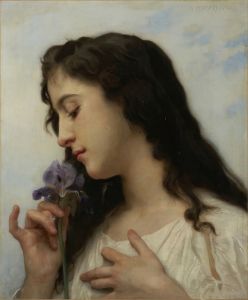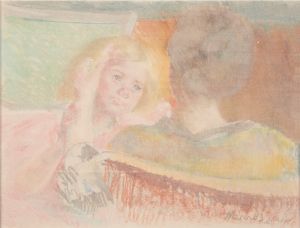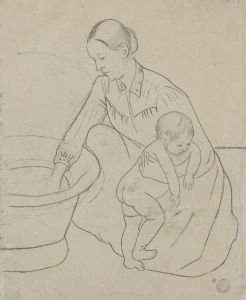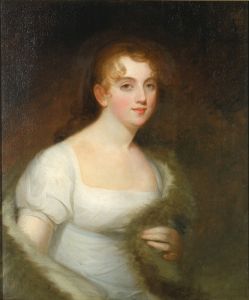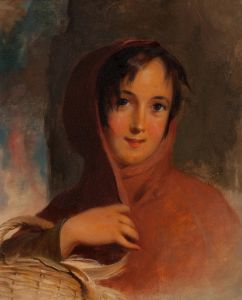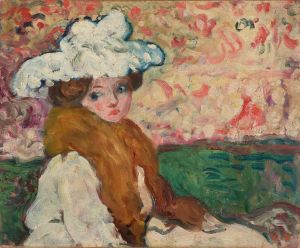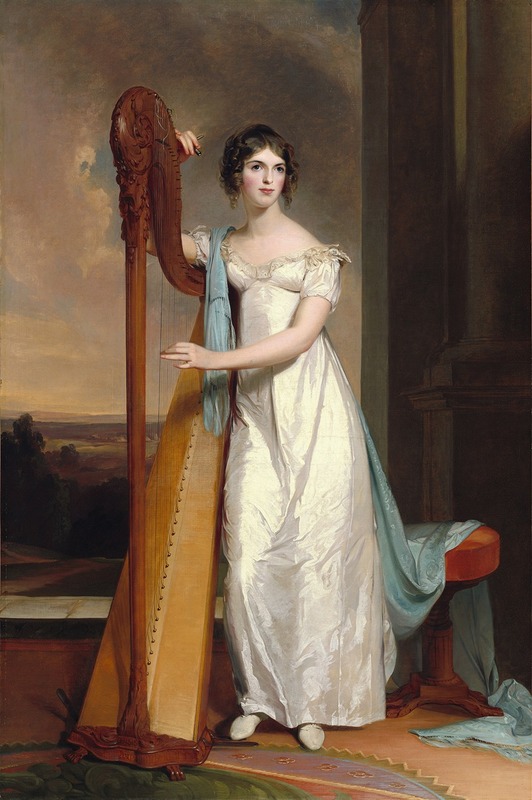
Lady with a Harp – Eliza Ridgely
A hand-painted replica of Thomas Sully’s masterpiece Lady with a Harp – Eliza Ridgely, meticulously crafted by professional artists to capture the true essence of the original. Each piece is created with museum-quality canvas and rare mineral pigments, carefully painted by experienced artists with delicate brushstrokes and rich, layered colors to perfectly recreate the texture of the original artwork. Unlike machine-printed reproductions, this hand-painted version brings the painting to life, infused with the artist’s emotions and skill in every stroke. Whether for personal collection or home decoration, it instantly elevates the artistic atmosphere of any space.
"Lady with a Harp – Eliza Ridgely" is an oil painting created by the American artist Thomas Sully in 1818. The artwork is a portrait of Eliza Ridgely, a prominent figure in early 19th-century American society, known for her cultural contributions and her role as a socialite. The painting is part of the collection at the National Gallery of Art in Washington, D.C.
Thomas Sully, born in 1783 in England, was a renowned portrait painter who immigrated to the United States with his family in 1792. He became one of the most sought-after portraitists of his time, known for his ability to capture the elegance and character of his subjects. Sully's style was influenced by the British portrait tradition, particularly the works of Thomas Lawrence and Joshua Reynolds, which is evident in his use of soft colors and graceful compositions.
The subject of the painting, Eliza Ridgely, was born Eliza Eichelberger in 1803. She married John Ridgely, a wealthy landowner, and became the mistress of Hampton, a large estate in Maryland. Eliza was known for her love of music and the arts, and she was an accomplished harpist. This aspect of her life is prominently featured in Sully's portrait, where she is depicted seated with a harp, emphasizing her musical talent and cultural refinement.
In "Lady with a Harp," Sully captures Eliza Ridgely in a moment of serene contemplation. She is elegantly dressed in a white gown, with her hair styled in the fashion of the time. The harp, a symbol of her musical ability, is positioned prominently beside her, and her hands rest gently on the strings, suggesting a pause in her playing. The background is softly rendered, focusing the viewer's attention on Eliza and her instrument.
The painting is notable for its delicate use of light and color, which enhances the ethereal quality of the scene. Sully's technique in rendering the textures of the fabric and the sheen of the harp strings demonstrates his skill as a portraitist. The composition is balanced and harmonious, reflecting the grace and poise of the sitter.
"Lady with a Harp – Eliza Ridgely" is an important example of early American portraiture, illustrating the cultural aspirations of the American elite during the post-Revolutionary period. It also highlights the role of women in the arts and society, as Eliza Ridgely was not only a patron of the arts but also an active participant in the cultural life of her time.
The painting remains a significant piece in the National Gallery of Art's collection, offering insight into the life and times of its subject, as well as the artistic milieu of early 19th-century America. Through Sully's masterful portrayal, viewers are given a glimpse into the world of Eliza Ridgely, capturing her elegance and the artistic spirit of the era.





